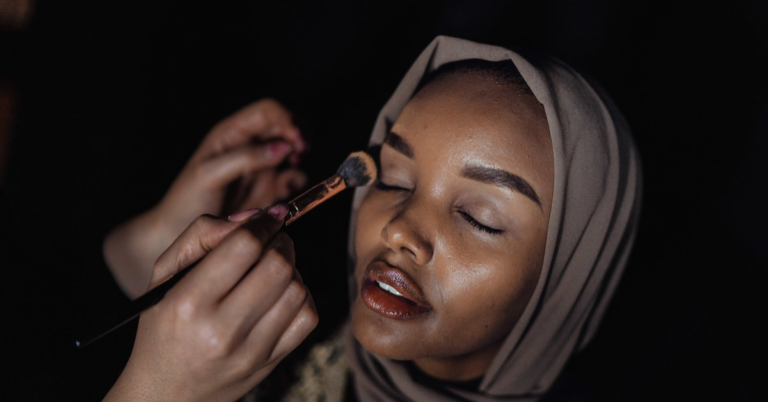Can Bees Sting Through a Bee Suit? Unravelling the Mysteries of Beekeeping Suit Protection
Imagine stepping into a sun-dappled apiary, where the gentle hum of bees fills the air. The beekeeper, clad head-to-toe in a pristine white suit, approaches the hive with steady hands and a calm demeanor. As the bees buzz around, seemingly unbothered by the intrusion, one might wonder: “Can bees sting through a bee suit?” It’s a question that has crossed the minds of many, whether seasoned beekeepers or curious onlookers. To answer this, we must delve deep into the construction of bee suits, the anatomy of a bee sting, and the fascinating interplay between bees and their human caretakers.
The Bee Sting: A Small Yet Powerful Defense Mechanism
To truly appreciate the protection a bee suit offers, it’s important to first understand how a bee sting works. The honeybee’s stinger is a marvel of natural engineering, equipped with barbs that ensure the sting is firmly lodged into the target. Once a bee stings, its stinger, which is attached to a venom sac, injects venom into the skin. This venom causes immediate pain and a subsequent inflammatory reaction, which is why bee stings are so painful and irritating.
For the bee, this act of defense is a double-edged sword. The barbed stinger remains embedded in the skin, tearing away from the bee’s body as it tries to fly away, ultimately leading to its death. This sacrificial act serves as a potent reminder to any intruder that the hive is well-protected.
Beekeeping Suits: The Armor of the Apiary
Beekeeping suits are designed with one primary goal: to protect the wearer from bee stings. These suits are more than just a uniform; they are the beekeeper’s armor, crafted to withstand the probing stingers of even the most defensive bees. Let’s break down the various elements of a beekeeping suit and how each part contributes to the beekeeper’s safety:
1. Fabric Composition: The First Line of Defense
Most beekeeping suits are made from thick, durable materials like cotton, polyester, or a blend of fabrics. High-quality suits often feature multiple layers, providing extra padding in critical areas such as the torso, arms, and legs. This thickness is essential because it prevents the bee’s stinger from penetrating the fabric and reaching the skin.
Some advanced suits use specialized mesh layers, creating a barrier that allows air circulation while maintaining a safe distance between the skin and the outer layer. These ventilated suits are particularly popular in hot climates, as they offer protection without compromising on comfort.
2. Design and Fit: Creating a Safe Space
The design of the suit is crucial in ensuring comprehensive protection. A well-fitted suit should be slightly loose, allowing for movement while keeping the fabric away from direct contact with the skin. This loose fit creates a buffer zone, making it harder for bees to reach the skin with their stingers.
Elastic bands around the wrists, ankles, and waist are standard features in most suits, preventing bees from crawling inside. The suit should also feature robust zippers, preferably covered with velcro or elastic flaps, to seal off any potential entry points. A hooded veil, attached securely to the suit, provides protection for the face and neck – areas that are particularly vulnerable and sensitive to stings.
3. The Veil: Protecting the Most Vulnerable Area
The veil is one of the most important components of the bee suit. It shields the beekeeper’s face and neck, areas that are not only sensitive but also crucial for vision and communication. The veil is typically made from fine mesh, allowing the beekeeper to see clearly while keeping bees at bay. A poorly fitted or improperly secured veil can be a significant hazard, as a bee that finds its way inside can cause panic and increase the likelihood of multiple stings.
Can Bees Sting Through a Bee Suit? Understanding the Exceptions
Despite the impressive design and construction of beekeeping suits, they are not completely sting-proof. There are certain situations where a bee might be able to sting through the suit:
- Thin or Worn-Out Fabric: Over time, the fabric of a bee suit can wear down, becoming thin and frayed. This degradation reduces the suit’s effectiveness, making it easier for a determined bee to penetrate the material.
- Tight Fit Against the Skin: In areas where the suit is stretched tightly against the skin, such as the knees or elbows, the fabric is compressed. This reduces the distance between the bee and the skin, increasing the chances of a sting penetrating through.
- Gaps and Openings: If the suit is not properly secured, bees can find their way inside through gaps in the veil, unzipped sections, or loose cuffs. Once inside, bees can sting freely, as the suit no longer provides a barrier.
FOR MORE INFORMATION CLICK HERE : experience birthday gifts
Enhancing Bee Suit Protection: Tips for Beekeepers
To maximize the protective benefits of a bee suit, beekeepers should follow these best practices:
- Invest in Quality: A high-quality bee suit is worth the investment. Look for suits made from thick, durable materials with reinforced stitching and secure closures.
- Check for Wear and Tear: Regularly inspect your suit for signs of damage. Replace or repair any thin spots, frayed edges, or faulty zippers to maintain the suit’s integrity.
- Wear Layers: In addition to the bee suit, consider wearing an extra layer of clothing underneath. This added thickness can provide an extra buffer against stings.
- Seal All Openings: Make sure the suit is securely fastened at all points. Use elastic bands or velcro straps to tighten the suit around the wrists, ankles, and waist, and always double-check that the veil is properly secured.
Beyond the Suit: Best Practices for Sting-Free Beekeeping
While a bee suit is an essential tool, it’s only part of a broader strategy for safe beekeeping. Here are additional tips to reduce the risk of stings:
- Choose Calm Weather: Bees are more docile on sunny, calm days. Avoid working with them during overcast, rainy, or windy weather, as they tend to be more aggressive during these conditions.
- Use a Smoker: A smoker helps calm the bees by masking alarm pheromones. Use it gently around the hive entrance and the frames to keep the bees subdued.
- Stay Calm: Bees can sense agitation and may become defensive if the beekeeper is moving erratically. Remain calm, move slowly, and avoid swatting at bees, even if they land on you.
- Avoid Strong Scents: Bees are attracted to strong odors, including perfumes and scented soaps. Before heading to the apiary, avoid using any products with a strong fragrance.
The Symbolism of the Bee Suit: A Testament to Beekeeper Dedication
The bee suit, with its unmistakable design and purpose, is more than just protective clothing. It represents the beekeeper’s commitment to working in harmony with nature, respecting the bees’ space while safely managing the hive. Every time a beekeeper dons their suit, they are stepping into a role that requires patience, knowledge, and respect for these incredible creatures.
Conclusion: A Delicate Balance of Protection and Respect
In conclusion, while bees can, under certain conditions, sting through a bee suit, such occurrences are rare when wearing a high-quality suit and following proper beekeeping practices. A well-fitted, durable suit acts as an effective shield, allowing beekeepers to work confidently and safely around their hives.
The beekeeping suit is not just a barrier against stings; it’s a symbol of the delicate balance between humans and bees. It enables beekeepers to tend to their hives, nurture these vital pollinators, and harvest honey and other hive products with minimal risk. So, the next time you see a beekeeper in their suit, remember that this attire embodies not just protection, but a profound dedication to one of nature’s most essential and fascinating partnerships.
Keep an eye for more news & updates on Tamasha!




